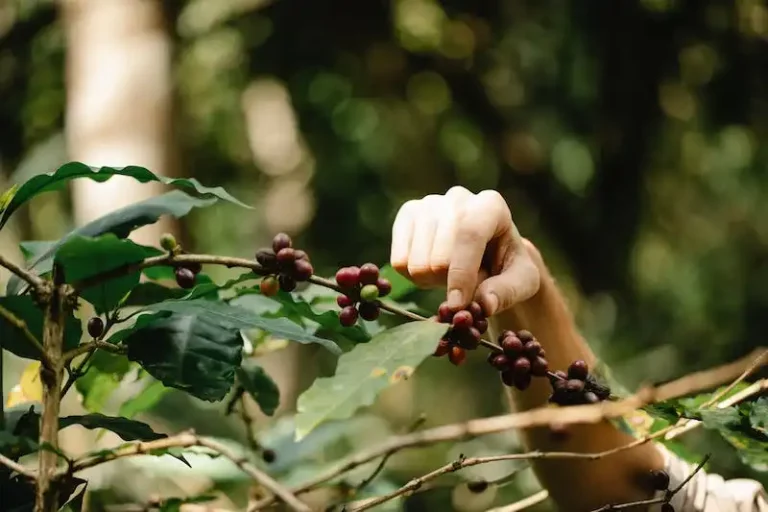Chinese kale, also known as kailaan or Chinese broccoli, is an edible vegetable that belongs to the cabbage family. It is a popular staple in Asian cuisine, especially in Oriental and Chinese dishes. Chinese kale plants have yellow or green leaves and can be easily grown in home gardens or farms.
If you want to learn more about Chinese kale and how to care for these crops, this article provides plenty of information. From the cultural ways of growing kale to the harvesting techniques, you will find all the essential tips to keep your Chinese kale plants healthy and productive.
When it comes to harvesting Chinese kale, you need to know the best time to do it. The ideal time to harvest the plants is in early fall when the leaves are still tender and full of flavor. To avoid any damage to the plants, it is recommended to cut the kale leaves from the outside, leaving the center intact for future growth.
After harvesting the Chinese kale, you can store it in the refrigerator for up to a week. If you want to store it for a longer period, blanch the leaves and freeze them. By following these simple steps, you can enjoy the delicious taste and nutritional benefits of Chinese kale all year round.
In addition to its culinary uses, Chinese kale has also gained popularity for its health benefits. It is a rich source of vitamins A and C, as well as calcium and iron. Chinese kale is also known for its high fiber content, making it a great addition to any healthy diet.
Chinese Kale Kailaan
Chinese Kale Kailaan, also known as Chinese broccoli or Chinese flowering cabbage, is a popular and nutritious vegetable in Chinese cuisine. It is a member of the cabbage family, Brassicaceae, and is closely related to broccoli and cabbage. The plant has long, dark green leaves with thick, tender stems and yellow flowers.
Cultural information about growing Chinese Kale is plentiful, as it is a widely cultivated crop both in China and in other parts of the world. The plant is known for its fast-growing nature and ability to tolerate different climates. It can be grown in both spring and fall seasons and is well-suited for growing in cool-weather regions.
Harvesting Chinese Kale
Chinese Kale can be harvested at different stages of growth, depending on personal preference. The leaves can be harvested while they are still small and tender, or they can be left to grow larger and more robust. Harvesting in stages allows for a continuous supply of fresh leaves.
The harvested leaves can be used in a variety of ways in cooking. They can be stir-fried with other vegetables, added to soups, or blanched and served as a side dish. The stems can also be eaten and have a crunchy texture and a slightly sweet taste.
Care and Growing Tips
If you are interested in growing Chinese Kale Kailaan, there are a few tips to keep in mind. It is best to start with young seedlings, which can be purchased from a nursery or started from seeds indoors. The plants should be spaced about 12 inches apart to allow for proper growth and air circulation.
Chinese Kale prefers well-draining soil and plenty of sunlight. It is important to water the plants regularly, but be careful not to overwater as this can lead to root rot. Fertilizing with a balanced fertilizer every few weeks can help promote healthy growth.
Chinese Kale is relatively resistant to pests and diseases, but it is still important to keep an eye out for any signs of trouble. Aphids, cabbage worms, and other common cabbage pests can be a nuisance, but they can usually be controlled with organic insecticides or by handpicking.
In conclusion, Chinese Kale Kailaan is a versatile and nutritious vegetable that is easy to grow and cultivate. With its delicious flavor and numerous health benefits, it is definitely worth adding to your garden or recipe repertoire.
Chinese Kale
Chinese kale, also known as kailaan or Chinese broccoli, is a leafy green vegetable that belongs to the brassica oleracea species. It is a member of the cabbage family and has similar characteristics to broccoli.
The leaves of Chinese kale are dark green and have a slightly bitter taste. They are edible and can be used in various ways in cooking. Chinese kale is rich in nutrients and is a good source of dietary fiber, vitamin C, and vitamin K. It is also low in calories, making it a healthy choice for those looking to maintain a balanced diet.
Chinese kale can be grown in both the fall and the spring. It requires well-drained soil and plenty of sunlight. It is a hardy plant that can withstand cold temperatures and is resistant to many common pests and diseases.
When harvesting Chinese kale, it is important to choose leaves that are green and tender. Yellow spots or wilted leaves indicate that the plant may be past its prime. Chinese kale can be stored in the refrigerator for up to a week.
There are many ways to incorporate Chinese kale into your diet. It can be stir-fried, steamed, or added to soups and stews. The leaves can also be used as a wrap for other ingredients. Chinese kale is a versatile vegetable that can be enjoyed in a variety of dishes.
If you are new to growing Chinese kale, it is important to learn about its cultural requirements and care. It is an oriental vegetable that is well adapted to the Asian climate and can be grown using both organic and conventional farming methods.
Chinese kale is not the only vegetable that falls under the brassica oleracea species. Other members of this species include cabbage, broccoli, and Brussels sprouts. These crops share similar characteristics and can be grown using the same cultural practices.
In addition to being a source of healthy vegetables, Chinese kale is also used for its medicinal properties. It is believed to have antioxidant and anti-inflammatory properties, making it a popular ingredient in traditional Chinese medicine.
Whether you are an experienced gardener or a beginner, there is plenty to learn about Chinese kale. It is a versatile and nutritious vegetable that can be enjoyed by people of all ages.
When searching for information about Chinese kale, be sure to use the correct spelling. Some common misspellings include Chinese cale, Chinese kalee, and Chinese kaal.
Chinese kale is a popular choice for those looking to incorporate more vegetables into their diet. Its unique flavor and nutritional benefits make it a great addition to any meal.
Growing Chinese Broccoli Plants: Learn About The Care Of Chinese Broccoli
Chinese broccoli, also known as kailaan, is a green, leafy vegetable that is popular in Chinese cuisine. Growing Chinese broccoli plants can be a rewarding experience for both amateur and experienced gardeners. In this article, we will provide you with information about the care of Chinese broccoli plants and how to keep them healthy.
Planting Chinese Broccoli
Chinese broccoli prefers a sunny location with well-drained soil. It can be grown from seeds or transplants. If you start from seeds, sow them directly in the ground in early spring or fall. Make sure to space the seeds or transplants about 6 inches apart to give them plenty of room to grow.
Cultural Care
Chinese broccoli plants require regular watering. Keep the soil evenly moist, but not waterlogged. Apply a layer of organic mulch around the plants to help retain moisture and prevent weed growth. Chinese broccoli is a heavy feeder, so it benefits from regular applications of balanced fertilizer. Follow the instructions on the fertilizer package for the best results.
Chinese broccoli is part of the cruciferous family, which includes cabbage and broccoli. These plants are susceptible to pests, such as aphids and cabbage worms. To prevent pest infestations, check your plants regularly and pick off any insects you see. If necessary, you can apply an organic insecticide according to the instructions on the label.
Harvesting Chinese Broccoli
Chinese broccoli can be harvested when the flower buds are still tight and the leaves are dark green. Use a sharp knife or pruning shears to cut the stems about 6-8 inches above the ground. You can store Chinese broccoli in the refrigerator for up to a week.
Chinese broccoli is an edible plant that is not only delicious but also highly nutritious. It is a good source of vitamins A and C, as well as calcium and iron. Incorporating Chinese broccoli into your diet can provide you with a variety of health benefits.
In conclusion, growing Chinese broccoli plants can be a rewarding experience. By following these care guidelines and providing the necessary cultural care, you can enjoy a bountiful harvest of this delicious vegetable. Take the time to learn about the care of Chinese broccoli, and you will be rewarded with healthy, thriving plants.
Growing Chinese Broccoli Plants
Chinese broccoli, also known as kailaan or Chinese kale, is a popular vegetable in Chinese cuisine. It is a member of the cabbage family and is known for its tender green leaves and edible stems. Chinese broccoli is rich in vitamins and minerals, making it a healthy choice for your garden.
Planting Chinese Broccoli Plants
Chinese broccoli plants can be grown from seeds or seedlings. It is best to start them indoors and then transplant them to your garden once the weather is suitable. You can start planting Chinese broccoli plants in the spring or fall, depending on the climate in your area.
When planting Chinese broccoli, choose a sunny spot in your garden with well-drained soil. The soil should be rich in organic matter and have a pH level around 6.5. Chinese broccoli plants prefer slightly cooler temperatures and do not tolerate heat well, so it is important to provide them with some shade during the hot summer months.
Care and Maintenance
Chinese broccoli plants require regular watering, especially during dry periods. Keep the soil moist, but not waterlogged, to prevent rotting. It is also important to keep the plants well-fed by applying a balanced fertilizer every 4-6 weeks.
Chinese broccoli plants can be attacked by various pests and diseases, such as aphids, cabbage worms, and clubroot. Monitor your plants regularly and take necessary measures to control these issues. Natural predators, like ladybugs and parasitic wasps, can also help in controlling pest populations.
Harvesting Chinese Broccoli Plants
Chinese broccoli plants can be harvested when the stems are thick and the leaves are dark green and tender. Cut the stems at the base, just above the soil level. You can then use the harvested Chinese broccoli in various dishes, such as stir-fries, soups, or steamed vegetables.
Additional Tips and Information
Here are some additional tips and information about growing Chinese broccoli plants:
| – Chinese broccoli plants can be grown alongside other vegetables, such as cucurbit crops (cucumbers, squash), legumes (beans, peas), or citrus trees. |
| – Chinese broccoli plants are fall crops and can be planted in late summer for a fall harvest. |
| – Chinese broccoli plants are susceptible to cabbage yellow, which is a systemic viroid. If you notice any yellowing or stunting of the plants, remove and destroy the affected plants to prevent the spread of the viroid. |
| – Store Chinese broccoli plants in a cool, dry place until you are ready to use them. You can also blanch and freeze them for later use. |
| – Chinese broccoli plants can be a source of high-quality protein and dietary fiber. |
By following these tips and learning about the cultural requirements of Chinese broccoli plants, you can grow a successful crop in your garden. Enjoy the delicious and nutritious oriental greens that these plants provide!


